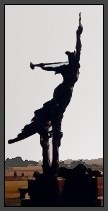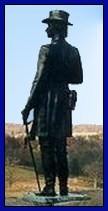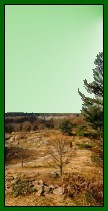
|
U. S. CIVIL WAR
PHOTOGRAPHS
|

|
GETTYSBURG
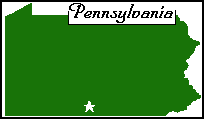
In the text, the icon  is a link to the definition of the word it marks. is a link to the definition of the word it marks.
Use your
browser's "back" button to return to this page.
The battle of Gettysburg, Pa. July 3d. 1863.
Published by Currier & Ives [1863?].
Lithograph, hand-colored.
| |
July 1-3, 1863
Estimated Casualties: 51,000 total (US 23,000; CS 28,000)
On July 1, 1863 at Gettysburg, a small town in southern Pennsylvania,
Confederate General Robert E. Lee concentrated the full strength of the Army of
Northern Virginia against Union Major General George G. Meade's Army of
the Potomac
against Union Major General George G. Meade's Army of
the Potomac . .
On June 30, 1863, Lee learned that Gettysburg was occupied by Brigadier General
John Buford's Union cavalry. Accordingly, he sent Hill's Corps (Generals Heth and
Pender) down the Chambersburg Road, early in the morning of July 1, to drive away
Buford's cavalry and occupy the town.
Encountering Buford's resistance about two miles from town, General Heth
deployed two brigades in line and pressed forward. Around 10 a.m., Union General
John F. Reynolds, commanding I Corps, arrived on the field (relieving Buford) and
ordered I Corps and General Oliver O. Howard's XI Corps to march into Gettysburg.
As Reynolds directed forces into the line, he was killed by enemy fire.
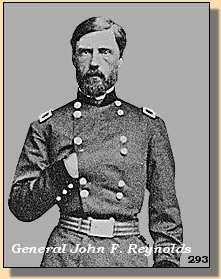
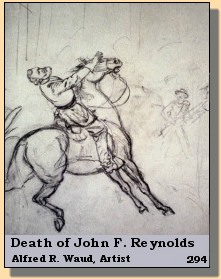
Later Confederate forces converged on the town from west and north, driving
Union forces through the streets to Cemetery Hill.
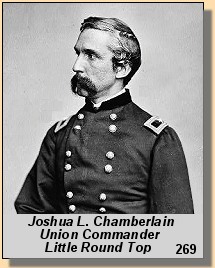 During the night, reinforcements arrived for both sides. On July 2, Lee
attempted to envelop the Federals, first striking the Union left flank
During the night, reinforcements arrived for both sides. On July 2, Lee
attempted to envelop the Federals, first striking the Union left flank at the Peach Orchard, Wheatfield,
Devil's Den, and the Round Tops with Longstreet's and Hill's divisions at the Peach Orchard, Wheatfield,
Devil's Den, and the Round Tops with Longstreet's and Hill's divisions , and then attacking the Union right
at Culp's and East Cemetery Hills with Ewell's divisions. By evening, the
Federals retained Little Round Top and had repulsed most of Ewell's men. During
the morning of July 3, the Confederate infantry were driven from their
last toe-hold on Culp's Hill. In the afternoon, after a preliminary
artillery , and then attacking the Union right
at Culp's and East Cemetery Hills with Ewell's divisions. By evening, the
Federals retained Little Round Top and had repulsed most of Ewell's men. During
the morning of July 3, the Confederate infantry were driven from their
last toe-hold on Culp's Hill. In the afternoon, after a preliminary
artillery bombardment,
Lee attacked the Union center on Cemetery Ridge. The Pickett-Pettigrew assault
(more popularly, Pickett's Charge) momentarily pierced the Union line but was
driven back with severe casualties bombardment,
Lee attacked the Union center on Cemetery Ridge. The Pickett-Pettigrew assault
(more popularly, Pickett's Charge) momentarily pierced the Union line but was
driven back with severe casualties . Stuart's cavalry attempted to gain
the Union rear but was repulsed. On July 4, Lee began withdrawing his army
toward Williamsport on the Potomac River. . Stuart's cavalry attempted to gain
the Union rear but was repulsed. On July 4, Lee began withdrawing his army
toward Williamsport on the Potomac River.
(Text Source: U.S. Gov't, National Park Service, and others.)
|
|
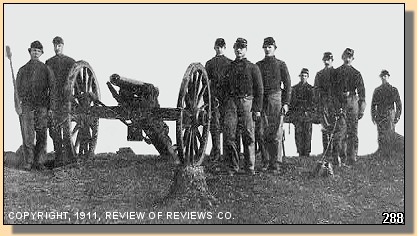
A Union gun and gunners that repulsed Pickett's charge
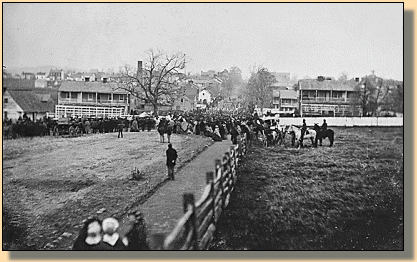 173 173
Regiment marching down a street in Gettysburg, Pa,
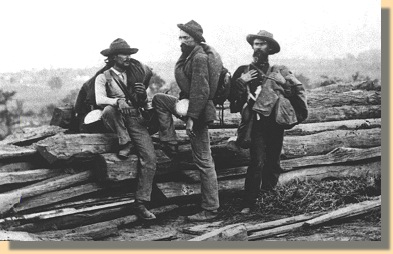 61 61
Gettysburg - Confederate Prisoners
| |
Gettysburg consists of two equally important photographic stories.
First, the battlefield and town; including the copse of trees, Devil's Den, Little Round Top,
Culp's Hill, etc. And second, the Monuments. These pages will show you both,
but, because of their number, the monuments will compose the greater part of
this presentation. of trees, Devil's Den, Little Round Top,
Culp's Hill, etc. And second, the Monuments. These pages will show you both,
but, because of their number, the monuments will compose the greater part of
this presentation.
To provide some order to this photographic presentation, I have
divided it into three sections; two covering the monuments and one
covering the battlefield and the town.
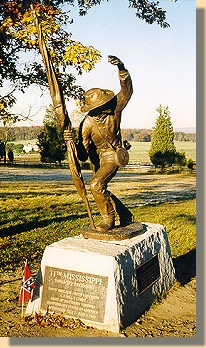
11th Mississippi Infantry Regiment Monument
The "CONFEDERATE" section contains photographs of
CSA monuments mainly on the western side of the battlefield.
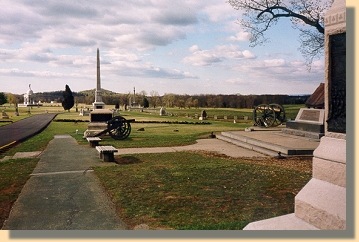
Union Monuments
The "UNION" section contains photographs of USA
monuments mainly on the eastern side of the battlefield.
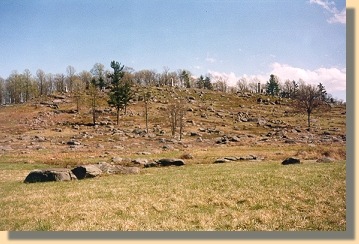
Little Round Top
The "VIEWS" section presents photographs of the battlefield and the town
of Gettysburg rather than the monuments.
|
|
To go to a section, click on its photograph.
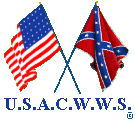 >
Civil War Photos
>
Gettysburg
>
Civil War Photos
>
Gettysburg
Notes
|
|



 173
173
 61
61



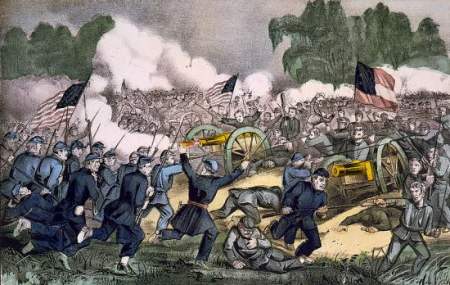


 During the night, reinforcements arrived for both sides. On July 2, Lee
attempted to envelop the Federals, first striking the Union left flank
During the night, reinforcements arrived for both sides. On July 2, Lee
attempted to envelop the Federals, first striking the Union left flank


